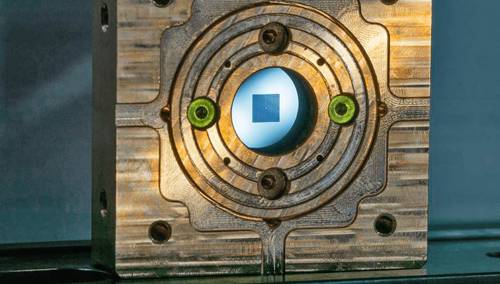They design a quantum memory device towards an ultra-secure and faster Internet
Madrid. Researchers at the Niels Bohr Institute at the University of Copenhagen have developed a new way to create quantum memory by taking advantage of the Internet.
It is a small drum, visible to the naked eye, capable of reaching quantum states. It can store data sent with light in its sonic vibrations and then resend the data with new light sources when necessary.
The results show that mechanical memory for quantum data could be the strategy that paves the way to an ultra-secure Internet with incredible speeds.
The quantum drum is a small membrane made of a glass-like ceramic material with holes scattered in an orderly pattern along its edges.
When the drum is hit with laser light it begins to vibrate, and it does so so quickly that quantum mechanics comes into play. This property has long caused a stir by opening up a series of possibilities in this technology.
Now, a collaboration between several quantum areas of the institute has shown that the drum can also play a key role for the quantum computer network of the future. Like modern alchemists, researchers have created a new way of quantum memory
by converting light signals into sonic vibrations.
In his work, recently published in Physical Review Letters, Researchers have shown that quantum data from a quantum computer emitted as light signals (for example, via fiber optic cable already used for high-speed Internet connections) can be stored as vibrations in the drum and then resend them.
Previous experiments showed that the membrane can remain in an otherwise fragile quantum state.
